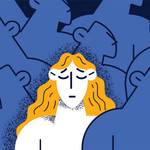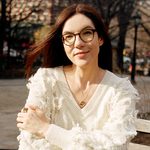Shayla Stonechild: Yoga Is a Tool for Healing—One that I’m Sharing with My Community
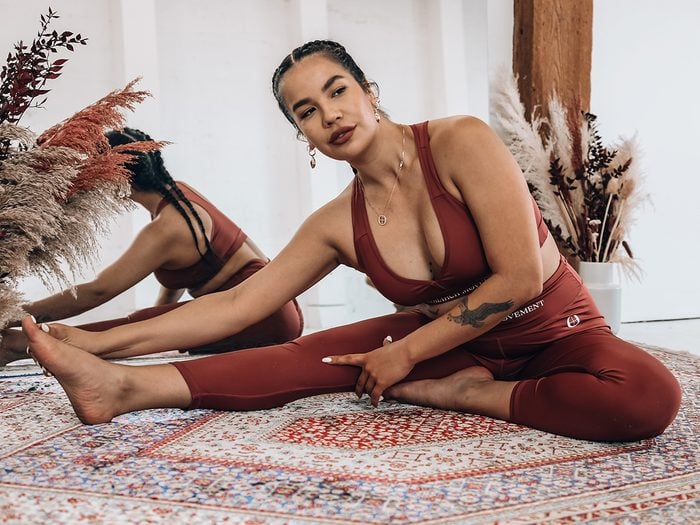
"The most revolutionary thing we can do to get our power back is to reclaim our own spirits and voices," says yoga instructor Shayla Stonechild. "For that, we need to heal."
Every day I follow a set of rituals. I don’t wake up and immediately check my phone or emails because that overwhelms my senses. Instead, I go straight into meditation or a 10- to 20-minute yoga practice.
Some days, I might do a slow yin practice—I really love child’s pose because it calls for a state of complete surrender. I follow that with seven sun salutations; a sacred number for Nehiyaw people. Other days, I’ll just do breathwork. I rhythmically breathe in and out and feel the world slow down.
I took my first yoga class when I was 19 for the physical workout. I’ve since learned that yoga is so much more. For me, yoga has become a tool for healing—one that I am sharing with my community.
“Yoga helped me heal in a new way”
I grew up in Medicine Hat, Alberta, but I am from Muscowpetung First Nation, Treaty 4 territory. I am Métis and Nehiyaw (Cree). Growing up, I was super shy and was the only Native girl in my school. I took that to mean that I didn’t fit in.
When I was 18, I moved to Vancouver to pursue acting and that’s where the actor Grace Dove, another Indigenous woman, introduced me to yoga. She was practicing hot yoga frequently and suggested I check it out because it was making her feel so much better in her body. At first I turned her down. I had the perception that yoga was for privileged white, able-bodied women who could afford expensive clothes and studio classes. After being the only Native girl in a school, I didn’t really want to experience that again. I went to a class with a group of friends and if it wasn’t for that support system, I don’t know if I would have ever walked in.
To my surprise, yoga helped me heal in a new way.
At the time, I was dealing with my own substance abuse and leaving a toxic relationship. Yoga showed me that I need to love myself first before I can love someone else or before I seek external substances and validation to fill a void within me. It made me return home to myself and realize I’m worthy enough to be here on this mat and in the world. There was a lot of releasing of sweat, but also of old narratives, beliefs and habits that were no longer serving me.
This healing inspired me to share the practice with the community and I started to shift my life path and vision towards health and wellness. I became a yoga instructor.
(Related: Mental Health Resources for Indigenous Peoples)
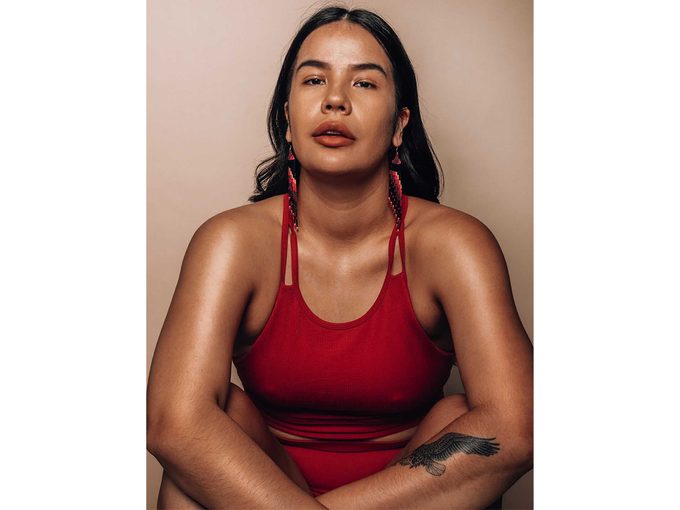
Recognizing meaningful similarities
In training, I was taught that the word “yoga” is derived from the Sanskrit root yuj, meaning “to yoke” or “to unite” and it means union of mind, body and spirit. It is believed that yoga is for everyone. It serves to connect the individual self to the universal consciousness.
I learned that yoga is a way of reclaiming a connection to the Creator. It has the same values as some of the teachings that we learn as Indigenous people. At first, I was in awe of how much these teachings overlapped. I was at a temazcal ceremony in Tulum, Mexico and a medicine man said, “What you’re learning at yoga teacher training…and about their gods and deities…it shows that we all come from the same source, we just call it different things.” When he said that, it helped me realize the interconnections and the differences that exist within my Nehiyaw lineage and yoga’s history.
I started to see similarities between the British colonizing India and what’s happened to Indigenous people in Canada. Yoga was banned by the British Empire so yogis and seers had to take the yoga practice underground to save the practice. We had to do the same thing for our ceremonies, like during the Potlatch ban, to save them.
Even though yoga originated in India, it has been appropriated and exploited within the white wellness industry. I’ve suggested to teachers that facilitate yoga teacher training that they need to be more accessible to marginalized communities—such as with sponsorships and/or sliding scales. Inviting teachers from that lineage to, for instance, lead discussion and planning, exploring the roots and history of yoga itself.
(Related: “For Me, Self-Care Is Self-Compassion”)
“Finding a way to move and to practice wellness is like medicine”
When I open up a class, I talk about how yoga is about connecting to something greater than yourself. It is a practice to connect to Creator, to consciousness, to God, to Source; whatever term you want to call it. In Nehiyaw tradition, when you go into a sweat, you’re going in with an intention and/or a dedication. It is a ceremony to help purify your mind, body and spirit. Yoga is similar. You purify yourself through your asana, your breath, pranayama, your intention and in relationship to the community around you.
A big part of why I wanted to become a yoga teacher was so that I could share yoga with Indigenous communities. I saw how our power was stripped away by genocide, within the residential school system and child apprehension. I believe the most revolutionary thing we can do to get our power back is to reclaim our own spirits and voices. For that, we need to heal.
During the pandemic, I facilitated virtual wellness workshops with Indigenous women through the Native Women’s Resource Center of Toronto and the Support Network for Indigenous Women and Women of Colour (SNIWWOC). We would start with a check-in, meditation and then go into breathwork, yoga practice and finish with a sharing circle. One woman started to get emotional after the meditation because she realized how much pain she carried throughout her life. We moved through a ‘cutting of the cord’ ceremony. The group held her up and allowed her to release all of that pain. We witnessed her cry, let go and transition into the reclamation of her power. This is when I understood how powerful this work can be. We are not only healing ourselves—we’re healing our family lines, our intergenerational bloodlines. Finding a way to move and to practice wellness is like medicine. We need everyday tools to help us release the trauma that we’re holding. It’s important to connect with something that is bigger than ourselves so we don’t carry it alone.
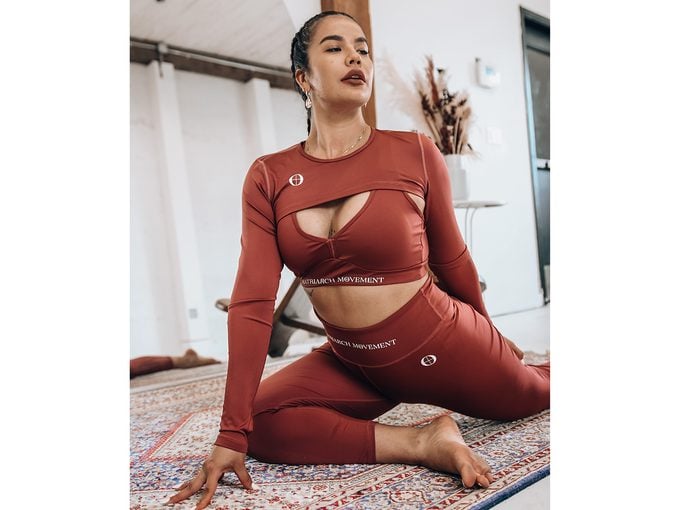
Creating a brave space
I am now a certified trauma-informed yoga instructor. I try to create a safe vessel—a brave space—for students to feel in their power. I want them to have authority and autonomy over their bodies and their practice. I try to provide a lot of options, and I’m mindful of the language I use. I use inclusive terms like “hey folks” instead of “hey guys” when I don’t know the group members’ preferred pronouns. I try not to create a hierarchy within the class. I don’t refer to advanced or beginner level teachings, I try to maintain an all-levels approach.
All yoga instructors should be facilitating trauma-informed classes. This is especially important when it comes to teaching within our communities. It’s crucial to make Indigenous participants feel like they have the power to decide what’s best for them. It shouldn’t be yet another space where Indigenous people feel oppressed. I hope I can help students to realize the power that lies within themselves through yoga, meditation and ceremony.
It’s such a colonial mindset to think that you know everything and that you have mastery over something. I’m always changing and evolving. I’m always going to be a student before I’m a teacher. I continue to seek out new instructors from the lineage because I still have a lot more to learn. Whether you’re Indigenous or from another background, we have so much to teach one another.
Next: This Soap Brand Is Sharing the Healing Power of Inuit Tradition



